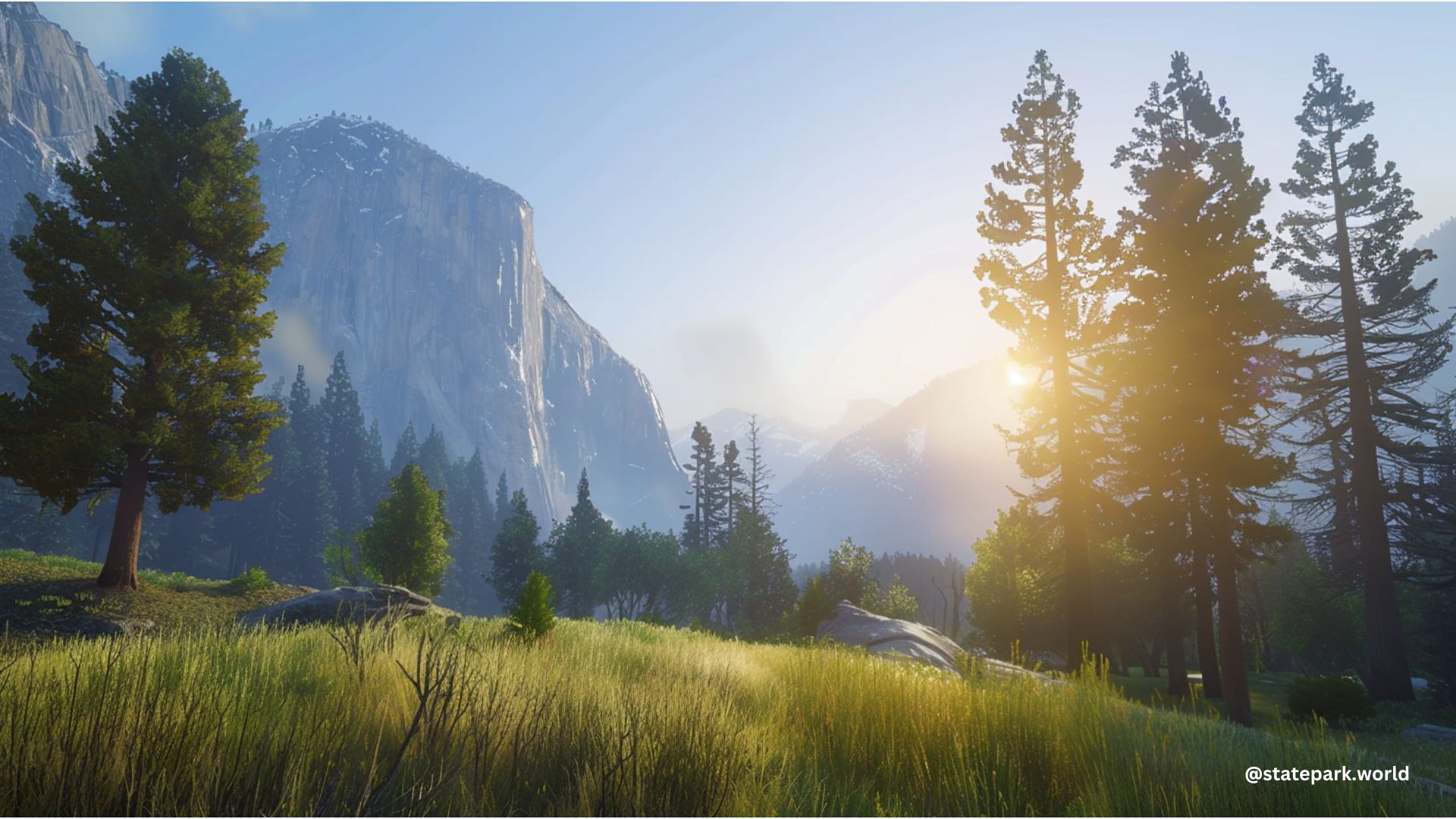Yosemite National Park is home to an incredible diversity of plant life, with more than 1,450 native and 275 non-native species. This rich flora is a significant part of the park’s exquisite beauty and biological diversity, with vegetation ranging from scrub and chaparral communities at lower elevations to subalpine forests and alpine meadows at higher elevations.
The Diversity of Plant Life in Yosemite National Park
The park’s vegetation zones are influenced by factors such as climate, topography, moisture, and soil, leading to distinct plant communities across an elevation gradient from approximately 1,800 feet (549 m) to over 13,000 feet (3,900 m). Some of the notable plant species found in Yosemite National Park include:
Giant Sequoia (Sequoiadendron giganteum)
These majestic trees are among the largest and oldest living organisms on Earth, with some specimens dating back 2,000 to 3,000 years.
Ponderosa Pine (Pinus ponderosa)
A common tree found at lower elevations, the ponderosa pine has yellow-orange bark, needles grouped in threes, and bark scales that fit together like a jigsaw puzzle.
Jeffrey Pine (Pinus jeffreyi)
Similar to the ponderosa pine, the Jeffrey pine tends to live at higher elevations and is also known as a “yellow pine”.
Sugar Pine (Pinus lambertiana)
Growing at slightly higher elevations, sugar pines produce large pine cones, have short needles grouped in fives, and have a reddish-brown bark.
Lodgepole Pine (Pinus contorta)
The most widely distributed pine in North America, the lodgepole pine groups its needles in twos, has yellow-orange bark, and small cones.
Whitebark Pine (Pinus albicaulis)
Found at higher elevations, whitebark pines bunch five needles together and have sticky purple-tinted cones.
Wildflowers and Other Plant Life

In addition to trees, Yosemite National Park is home to a wide variety of wildflowers, shrubs, grasses, and vines, with more than 50 species found in the park. The blooming season for wildflowers begins in February in the lowlands and lasts into early fall in the high country.
Exploring Yosemite’s Plant Diversity
For those interested in exploring Yosemite National Park’s plant diversity, there are 800 miles of trails that provide access to the park’s different vegetation zones. The park’s lower montane forest, which includes Yosemite Valley and the Wawona, Hetch Hetchy, and Big Oak Flat Roads, encompasses 166,000 acres (87,200 ha) and is a particularly beautiful and interesting area to explore.
In summary, Yosemite National Park is home to a rich and diverse flora, with more than 1,450 native and 275 non-native plant species. The park’s vegetation ranges from scrub and chaparral communities at lower elevations to subalpine forests and alpine meadows at higher elevations, providing a wide variety of plant communities to explore and enjoy.
References:
- Plants – Yosemite National Park (U.S. National Park Service). Retrieved from https://www.nps.gov/yose/learn/nature/plants.htm
- The Flora in Yosemite National Park | Frommer’s. Retrieved from https://www.frommers.com/destinations/yosemite-national-park/a-nature-guide/the-flora
- Flora | Yosemite Field Station – UC Merced. Retrieved from https://snrs.ucmerced.edu/natural-history/flora

